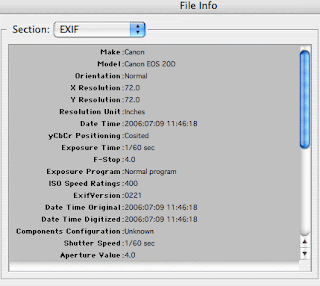I have been told that when learning, typically people retain 10% of what they are taught. However, if you reteach the idea, you retain 90% on the information. Therefore, I have selfishly decided to dedicate some of this blog to photography for beginners.

My birthday is coming up and my wonderful husband bought me a "fancy" camera (used on Amazon for super cheap!!). I got it a few days ago and after getting bored taking extremely amateur photos I decided to learn about the new features I have.
Tonight I have learned about ISO, Shutter Speed, and Aperture. Three words I had never heard before an hour ago. If you are an addict to "auto" mode on your camera, this post is not for you. However, if you want to learn and experiment with new features, learn away!
Turn your camera off auto mode and start taking pictures!
ISO, Shutter Speed and Aperture work together to create a great image in regards to exposure and lighting. These three concepts are interdependent: if you change one, it will affect the others. Hence, "The Exposure Triangle."
 Cheesy Metaphor:
Cheesy Metaphor: Imagine your camera is like a window with shutters that open and close.
Aperture is the size of the window. If it’s bigger more light gets through and the room is brighter.
Shutter Speed is the amount of time that the shutters of the window are open. The longer you leave them open the more that comes in.
Now imagine that you’re inside the room and are wearing sunglasses (hopefully this isn’t too much of a stretch). Your eyes become desensitized to the light that comes in (it’s like a low ISO).
There are a number of ways of increasing the amount of light in the room (or at least how much it seems that there is. You could increase the time that the shutters are open (decrease shutter speed), you could increase the size of the window (increase aperture) or you could take off your sunglasses (make the ISO larger). - This metaphor (including the picture) is from the website linked at the bottom of this post. For more detailed information, refer to it.
ISO in Digital Photography:
In short, changing ISO will impact the amount of light and graininess of the shot. Normal ISO is 100. If you take picture with say 1600 ISO, it will be grainy and more bright. Conversely, if you take a picture with lower ISO, say 80, it will be darker and smoother.
Fun Fact: Graininess, Noise and Pixelation all mean the same thing: whether the image looks blocky. "A lot of noise" just means the picture is pixelated.
Shutter Speed in Digital Photography:
As you may guess, this just means the amount of time the shutter is open. Shutter speed is extremely important when taking motion into consideration of a picture. If you are watching someone play a sport and want a still shot without the blurriness of motion, then you need to have a quick speed. However, if you are looking for the presence of motion (if you want to take a picture of a water fall to show the flow) then you will have a slow speed. Remember, if you slow the shutter speed down, you should use a tripod so the likelihood of unwanted blur from camera shaking is avoided.
Fun Fact: Shutter Speed is always measured in seconds. More commonly it is measured in fractions of seconds such as 1/30 which is much slower than 1/1000.
Images Below: The left is FAST shutter speed. The right is SLOW shutter speed.


Aperture for Digital Photography:
Aperture helps turn a one dimensional picture into a multi-dimensional masterpiece. More simply, it is the size of the opening in the lens when a picture is taken. The depth of focus is key to understanding aperture.
Fun Facts:
- Aperture is measured in f-stops which are expressed like: "f/number". THINK BACKWARDS! The smaller the number, the larger the opening. f/2.8 is much MUCH larger than f/22. And therefore, f/2.8 will let in much more light.
- "Moving from one f-stop to the next doubles or halves the size of the amount of opening in your lens (and the amount of light getting through)" (See Attached Link for More)
Remember: "A change in shutter speed from one stop to the next doubles or halves the amount of light that gets in also – this means if you increase one and decrease the other you let the same amount of light in – very handy to keep in mind)." (See Attached Link for More)
Depth of Field (DOF):
The depth of field is the "amount of your shot that will be in focus.
Large depth of field means that most of your image will be in focus whether it’s close to your camera or far away" (See Attached Link for More).
Small (or shallow) depth of field "means that only part of the image will be in focus and the rest will be fuzzy" (See Attached Link for More).
Remember: Small DOF means small aperture. Large DOF means large aperture.
Images Below:
The left image has a large DOF and a large aperture. Therefore, it is all in focus.
The right image has a small DOF and a small aperture. Therefore, just the front flowers are in focus.


To gain a greater understanding of these concepts and see the work I have sited all throughout this post (as well as most pictures), visit the site below. It will teach each concept in a much more detailed lesson and has tons more to offer.
http://www.digital-photography-school.com/digital-photography-tips-for-beginners
Bearcake Creations is a great blog if you are interested in fine foods, creative DIY projects, and photography tutorials. Explore the site using the labels on the right. Be sure to leave a comment or "follow" and you will absolutely brighten my day!!!

 Directions:
Directions:















































